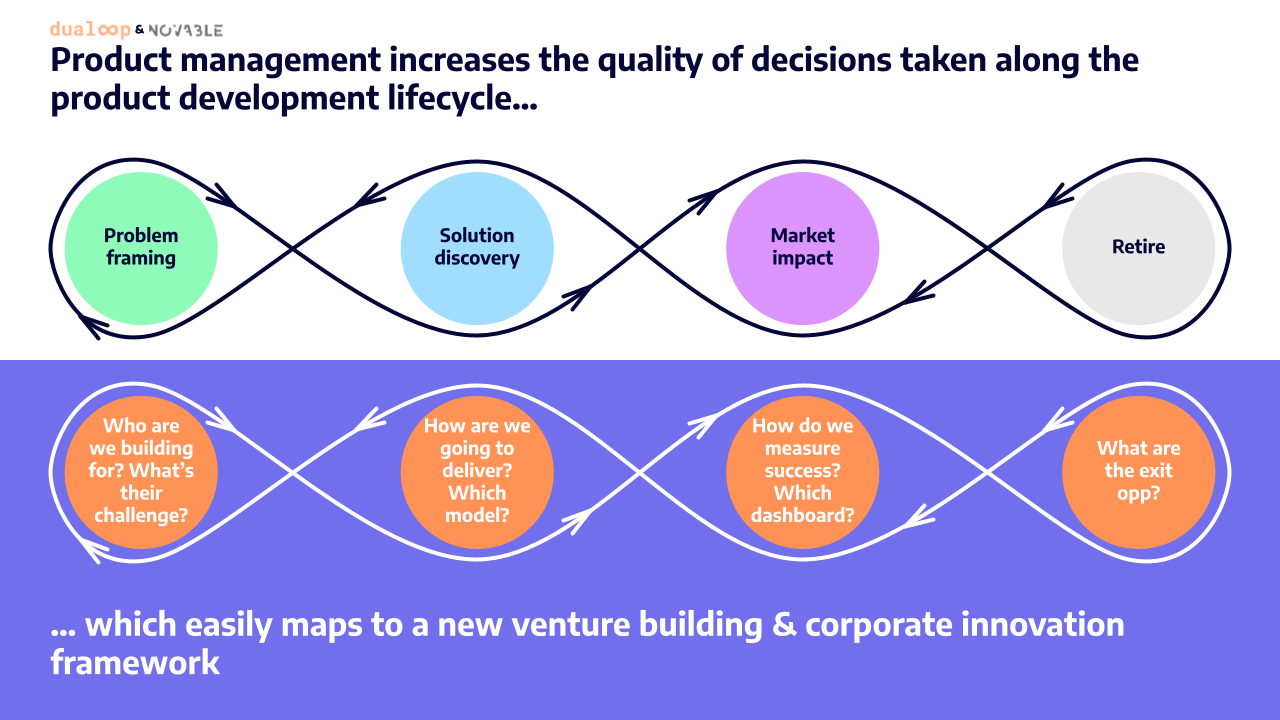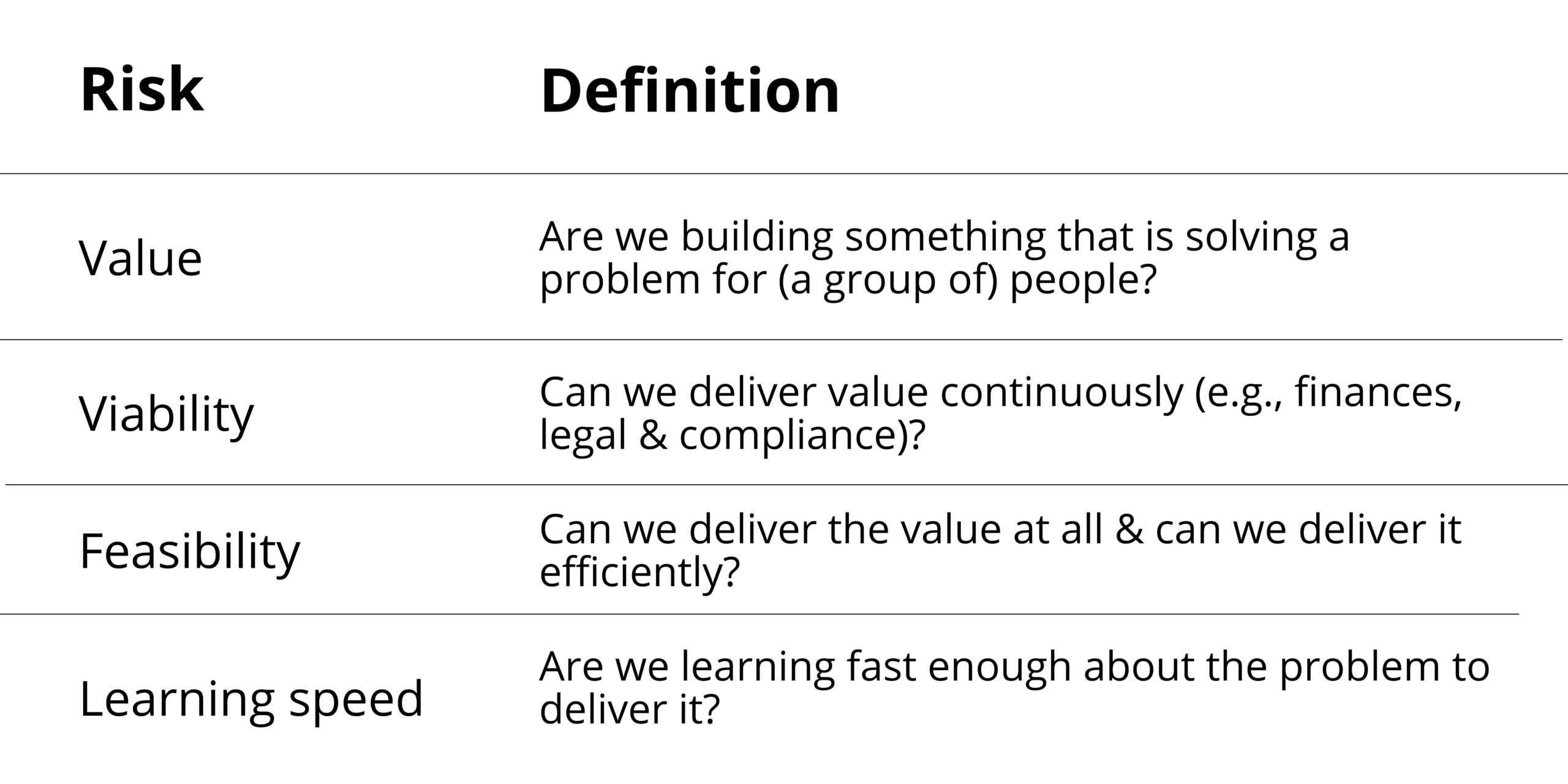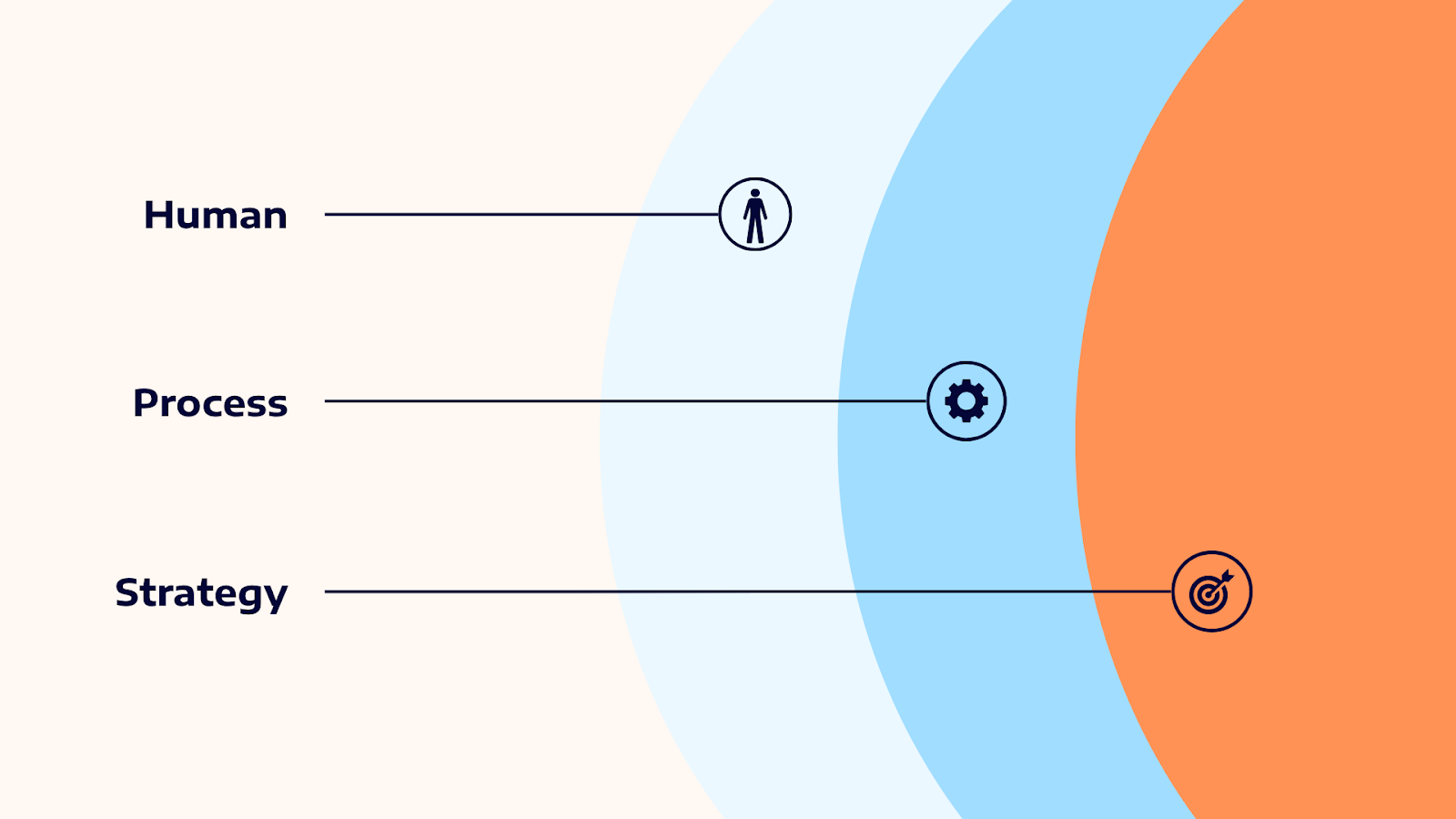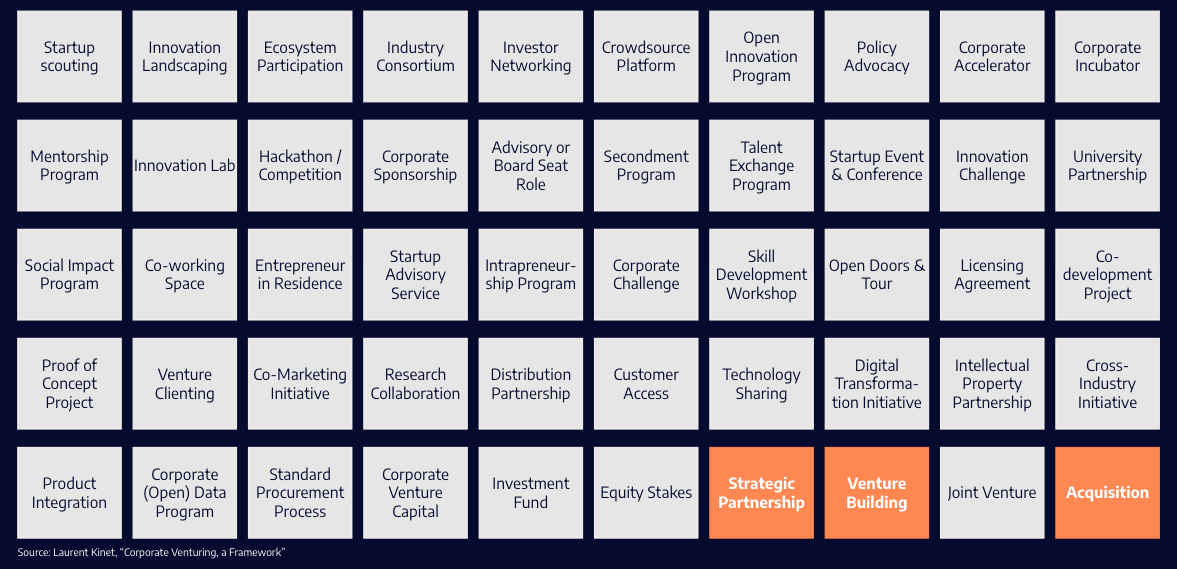In the world of innovation, launching a new venture or Client Venturing initiative is one of the most ambitious and uncertain moves an organization can make. With startups facing a 70% failure rate within five years and corporate ventures, succeeding only half the time, the odds can seem daunting. The key to success isn’t eliminating risk but mastering it through a powerful combination of strategic alignment, Client Venturing, and disciplined product thinking.
The foundation of any resilient, high-impact venture or Client Venturing project lies in aligning people, teams, processes, and goals from the very beginning. This is the core of Novable’s philosophy: building collaborative ecosystems, designing effective venture governance, and ensuring strategic alignment during Client Venturing. But as we explored in a recent webinar with our colleagues at dualoop (product management and product design consulting), alignment alone is not enough. Martin has explained that to transform ambitious ideas into validated, scalable solutions, either for internal ventures or Client Venturing with external partners, you also need a disciplined product management approach.
While Novable’s strength lies in orchestrating the ‘who’ and ‘why’ of collaboration, aligning the right people and structuring ventures around clear goals, collaboration without execution leads nowhere. This is where the perspective shared by dualoop in the webinar becomes critical. They champion the ‘how’ of execution, applying iterative product loops to de-risk bold ideas and turn them into validated solutions.
As Martin from dualoop explained that their approach involves slowing teams down at the right moments to ask critical questions: Who is the customer? What’s the real problem? Why now? This product thinking guides a venture through MVP development, structured experimentation, and measurable iteration, ensuring that no time or capital is wasted. The webinar we co-conducted showcased how these two mindsets – strategic alignment and product discipline, form a complete venture-building engine where alignment fuels collaboration, and product thinking drives execution.
Venture building isn’t just about creating a product, it’s about launching an entire business, including a focus on Client Venturing strategies. This means solving real customer problems while ensuring the parent organization is aligned around those solutions. Too often, teams rush into development without validating the problem or getting all stakeholders on board.
As discussed in the webinar, Novable’s approach ensures alignment across strategy, governance, and collaboration, while dualoop’s product thinking helps teams iterate fast, test assumptions, and reduce uncertainty. To quote Melissa Perri, product management is about “maximizing value for the customer and the business over the lifetime of a product.” Bringing these two disciplines together with Client Venturing, focuses energy on building things that matter.
The product loop is a cornerstone of modern product thinking. It’s an iterative process that enables teams to:
This loop isn’t just for product features, it can be applied to entire ventures within Client Venturing to validate key assumptions, align decision-makers, and build stakeholder confidence.

Building a venture isn’t a race, it’s a structured process of navigating uncertainty. Drawing from the work of Eric Ries, a product-led approach focuses on addressing four critical risks:

As Melissa Perri also says, “Product managers are the shepherds of risk, not the owners of output.” A product-centric methodology mitigates these risks systematically, while a strong collaborative structure ensures the entire venture supports this rapid, iterative learning.
To illustrate this product-led approach, Martin from dualoop shared a powerful case study from his experience. A client wanted to explore a digital fleet management business but started with no team or product – only an opportunity.
The team, led by Martin, drove the product discovery and validation process by tackling risks head-on:
Within 12 months, the venture launched in four countries and became part of a new entity valued at over $2 billion. This success illustrates what’s possible when disciplined product execution, alongside Client Venturing, brings a strategic vision to life.
In the webinar, Laurent from Novable broadened the conversation, introducing a crucial concept for making corporate innovation work: porosity. This is the ability for people, ideas, and expertise to flow across organizational boundaries. True collaboration happens at three interdependent levels:

If any layer closes, innovation stalls. Keeping all three open ensures a continuous flow of value and insight, allowing a venture to thrive.
No two ventures are the same. Novable has mapped over 50 venture models, each suited to different goals. Their framework helps clients start with the right question: “What business objective or KPI are we trying to achieve?“

The trick is to match the model to your strategic objective. Ask yourself:
By mapping strategies to over 100 innovation benefits, this data-driven approach maximizes outcomes and reduces misalignment from day one.
At the heart of successful venture building lies intelligent innovation scouting. Novable’s proprietary technology, backed by expert analysts, creates a permanent layer of visibility into the global innovation landscape. This allows clients to:
Scouting is not a one-off task. It is the fuel that powers an agile, responsive innovation strategy centered around Client Venturing initiatives.
You can’t eliminate risk in venture building, but you can master it. The philosophies shared by Novable and dualoop combo in our recent webinar offer a powerful blueprint for success.
By combining our focus on strategic alignment and collaborative ecosystems with dualoop’s disciplined, risk-mitigating product thinking, and incorporating Client Venturing, organizations can launch ventures that are not only innovative but also resilient and scalable. This synthesis of ideas transforms venture building from a high-stakes gamble into a repeatable engine for growth, where collaboration and learning drive sustainable, data-backed success. Learn more insights from the webinar.